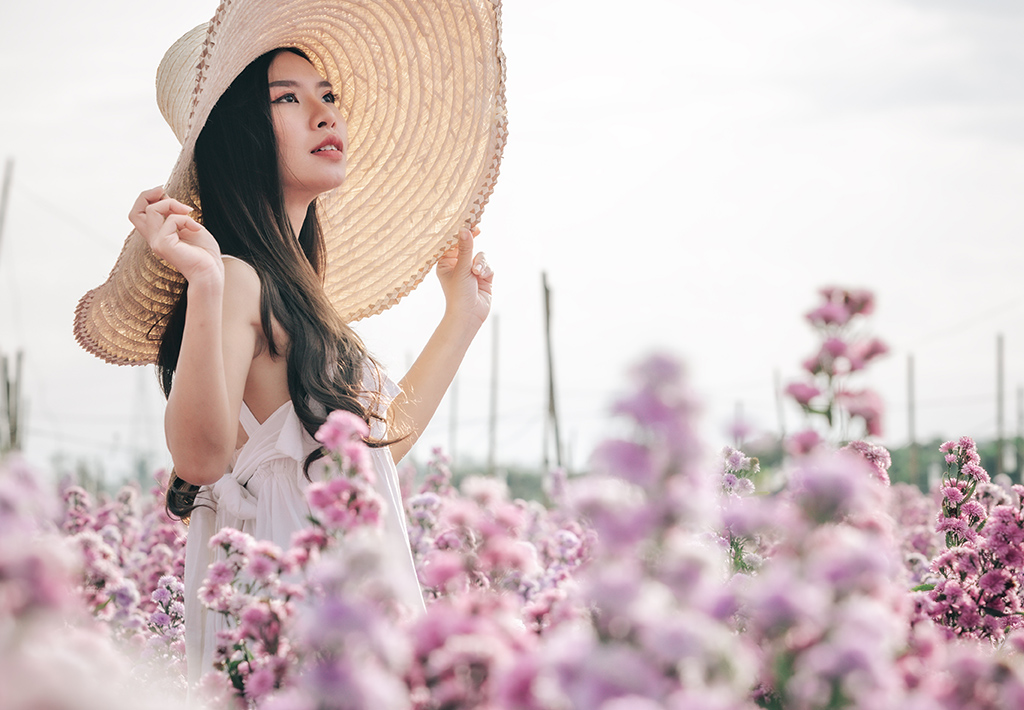Do you have red, itchy, and watery eyes despite taking an oral allergy medication? Are your kids constantly rubbing their eyes after playing outside during the springtime? You or your family may have allergic conjunctivitis, a common ocular condition that wreaks extra havoc every spring.
What causes eye allergies?
The human eye has approximately 50 million mast cells. When a mast cell is triggered by an antigen, such as pollen or dander, it immediately releases thousands of chemical mediators, the most prominent of which is histamine.
Histamine released near the eye causes swelling and itching of the eyelids and ocular surface. This reaction is a Type-I hypersensitivity reaction and is the hallmark of allergic conjunctivitis. The sensitivity of your mast cells to a particular antigen will determine whether and to what extent you exhibit allergic symptoms. Some people are prone to allergies all year round, especially those with eczema and other atopic disorders. For others, springtime is synonymous with allergy season because of the increased levels of allergens in the air. What can we do about it?
How to treat allergic conjunctivitis
As with most medical issues, eye allergies are best treated with a combined approach, including avoiding inciting factors, air purification, conservative measures, and medications. These approaches can be further divided into the TOP TEN ways to treat eye allergies:

- Watch the weather: stay indoors on dry, windy days to avoid excessive allergen exposure, especially during spring blooms. The safest time to go outside is after a good rain, which helps clear pollen from the air.
- Avoid lawn mowing, weeding, and other gardening tasks that stir up allergens. If you can’t fight the landscaping itch, then wear a face mask and eye protection to lower your allergic burden.
- Remove clothes you’ve worn outside and shower to rinse pollen from your skin and hair. Don’t hang laundry outside — pollen can stick to sheets and towels.
- Use high-efficiency HVAC filters and change them at least every three months or once per season. Consider supplemental air purification in your bedroom with a portable high-efficiency particulate air (HEPA). Clean floors often with a vacuum cleaner that has a HEPA filter.
- Remove your contacts: contacts can trap allergens on your eye and deprive your eye of adequate oxygen and nutrients to stay healthy. Wear glasses when outside during allergy season, and consider getting laser eye surgery prior to allergy season.
- Cold compresses: applying a cold compress to your closed eyelid can minimize eyelid swelling and decrease itching.
- Preservative-free artificial tears: artificial tears help wash away allergens from your ocular surface and temporarily relieve itching and burning. Preservative-free is always best!
- Antihistamines: this class of medication binds to – and blocks – histamine receptors so that the histamine released from the mast cells cannot cause swelling, itching, and redness.
- Oral antihistamines: Cetirizine (Zyrtec), Loratadine (Claritin), or Fexofenadine (Allegra) can be taken daily, either throughout the year or just during allergy season. Diphenhydramine (Benadryl) is an antihistamine that also binds to central histamine receptors, causing drowsiness.
- Antihistamine eye drops: Ketotifen (Alaway, Zaditor) and Olopatadine (Pataday, Patanol, Pazeo) directly block histamine on the eye to provide immediate relief from itching and redness. These drops also inhibit mast cells (see #9 below), so they have their optimal effect after two weeks of daily use. Be wary of medications marketed for red eye – such as Visine, Opcon-A, and Naphcon-A – as these contain vasoconstricting agents that worsen redness if used for over a few days.
- Mast cell inhibitors: these medications inhibit mast cells, not just histamine. However, they take a few weeks of daily use to build up maximum effect. Ketotifen and Olopatadine have inhibitory effects on mast cells in addition to their antihistamine action. Other medications in this class include Lodoxamin (Alomide) and Cromolyn (Crolom).
- Corticosteroids: if your allergic eye symptoms are severe or persist despite taking all the above measures, you may benefit from a short course of steroid eye drops. Fluorometholone and Prednisolone Acetate are two common steroid drops used for allergy or inflammation of the eye. Steroid eye drops must be prescribed by a trusted eye care provider (ophthalmologist or optometrist) and monitored closely, as they can cause elevated eye pressure and cataracts if taken for a prolonged time.

What is the best allergy medicine for itchy eyes?
There is no single best medicine to treat allergic conjunctivitis. A combined approach of allergen avoidance, air filtration, conservative measures, and medications will be more helpful than any one modality. But if I had to pick a single medication from #8-10 above, I would select Ketotifen (Zaditor) due to its over-the-counter availability, reasonable pricing (around $20 for a 2.5 mL bottle), and combination of immediate (antihistamine) and delayed (mast cell inhibition) effects on allergic conjunctivitis. Of course, an oral medication may be indicated if you suffer from systemic allergic symptoms such as runny nose and sneezing.
Summary
Red, itchy, watery eyes can ruin the most scenic spring blooms. But if you follow the recommendations above, you can significantly improve your allergic eye symptoms this spring. Schedule an appointment with your ophthalmologist or optometrist if your eyes need extra help. And remember, eye rubbing is never the answer! When your eyes feel itchy, reach for artificial tears and a cold compress instead.
Thanks for reading!
Jonathan Corsini, MD


